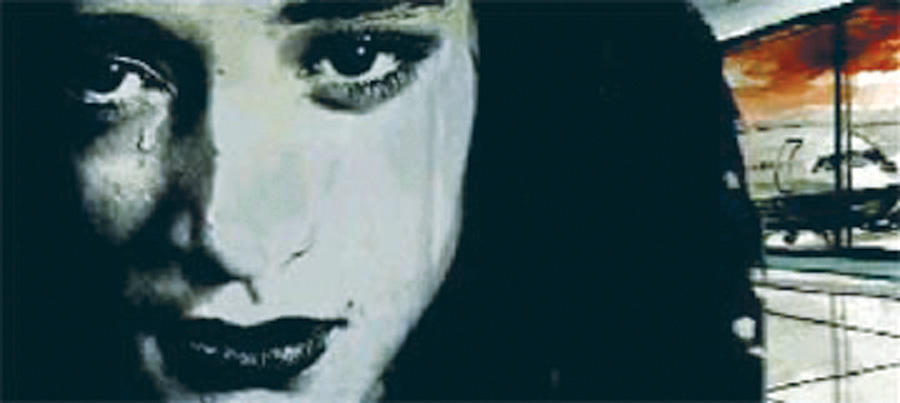
As much as I want to resist it, Prince and Madonna will be forever linked in my mind. The two are linked not only because they made us want to be teen sluts and do our part toward the heartbreaking excesses of the 1980s, but because they are both still here, both still stirring the Pop Idol’s many requisite pots: musical, aesthetic, spiritual, political, and even (the most caustic pot of the day) moral. Over the years, they’ve matured (as artists and as human beings); both Prince and Madonna have confused the issue of their own names, and each has also traded up pushing sexual buttons for pushing religious ones. These days Madonna would like us to recognize her as Esther, the intercontinental star/author/mom who brought us Judaism anew with her kabala bracelets and life-coaching. Prince famously renounced appellation altogether back in the nineties but has since reclaimed the name Prince — albeit a Prince whose prurient, provocateur lyrics are now either cast out of the playlist or reworked to become songs about faith in God.
That’s right, he is a practicing Jehovah’s Witness who, gossip tells us, goes door-to-door with four bodyguards in a limousine to proselytize and hand out copies of Awake! On his 2001 release, The Rainbow Children, Prince deploys his endless funk to more or less pay an album’s worth of homage to The Watchtower. With his contemporary target demographic yearning to be seduced by the classics — “Purple Rain,” “Kiss,” “Darling Nikki,” “Cindy C,” “Get Off” — it is immediately clear that this is an artist who will risk dividing an audience for the sake of calling it like he sees it. This is certainly the case with his recent single “Cinnamon Girl” (off of this year’s Musicology) and especially with the song’s so-called controversial video.
I say so-called because when I looked for the controversy, all I could find was brief mention of the controversy. The video features Whale Rider’s fourteen-year-old Oscar nominee, Keisha Castle-Hughes, as a young Arab-American who becomes the target of discrimination by her non-Arab peers after a terrorist attack. She is shown struggling with bullies and “betweenness” in her school-life and home-life. Bear in mind, too, that all of the backdrops to the actors are drawn in watercolor and pencil so that the video literally becomes an illustration. At the end of the four-minute piece, the young girl goes to an airport and has a fantasy about detonating a bomb. This dream quickly reveals itself as such, and the protagonist wakes, filled with relief both for herself and the innocents nearby. The narrative is provocative. But regardless, whatever protest was “aired out on cable news networks” at the end of October turns out to be far less captivating than Janet’s immortal nipple.
At the moment the detectable voice in opposition to the “Cinnamon Girl” video belongs to Stephan R. Silverfarb, executive director of the Jewish Community Relations Council of Minnesota and the Dakotas (otherwise known as the JCRC). After carefully acknowledging the musician’s First Amendment rights and the deplorable nature of discrimination on the whole, Mr. Silverfarb’s press release states, “Prince’s attempt to reflect a reality facing Arab Americans is laudable. But he does the Arab American community a disservice by suggesting that an Arab American teenager would consider a suicide bombing as justified for any reason… Regrettably, by choosing to connect suicide bombing with a just cause, Prince attached a measure of legitimacy to a categorically barbaric act.” While ice may get thin when people refer to acts of the oppressed as barbaric, these are not the most pointed fighting words. Mr. Silverfarb does not overstate his case.
Of course how far can one take the argument that Prince is legitimizing anything at all in his video? The artist himself refuses to comment on “Cinnamon Girl.” His PR camp insists that he wants us to draw our own conclusions, but it’s also hard to forget that celebrities speaking explicitly about politics have been booed into submission repeatedly (by TV’s real intellectuals). In addition, the ubiquity of debates about pop media inciting youth violence has dulled our attention spans and left us paranoid of preachy exchange.
So where does that leave our understanding of the Palestinian youths who have in fact “martyred” themselves and murdered others? Precious few American MTV viewers or their parents hear about such kids. In March of 2004, the BBC’s Jerusalem correspondent, James Reynolds, published an interview with a fifteen-year-old Palestinian boy named Hussam Abdo. Hussam was caught at a checkpoint with explosives strapped across his chest and immediately incarcerated by Israeli soldiers. When Mr. Reynolds asked Hussam why he had been not only willing but unafraid to kill himself and others, he replied, “The reason was because my friend was killed. The second reason I did it is because I didn’t want to go to school. My parents forced me to go and I didn’t feel like going.”
What astounds is what limited range Hussam has, how few options, how detached he must be when even the banal becomes damning. His short life seems filled with a catastrophic futility. And what is astounding about a Jehovah’s Witness who made a video with a Maori actress portraying a mixed-heritage Arab teen who responds to post-9/11 prejudice with dreams of mass destruction? That Prince is still aware of issues beyond himself, making records that sound pretty damn good, and perhaps even leaving us thinking, a bit.
Dear Madge — what have you done for me lately?